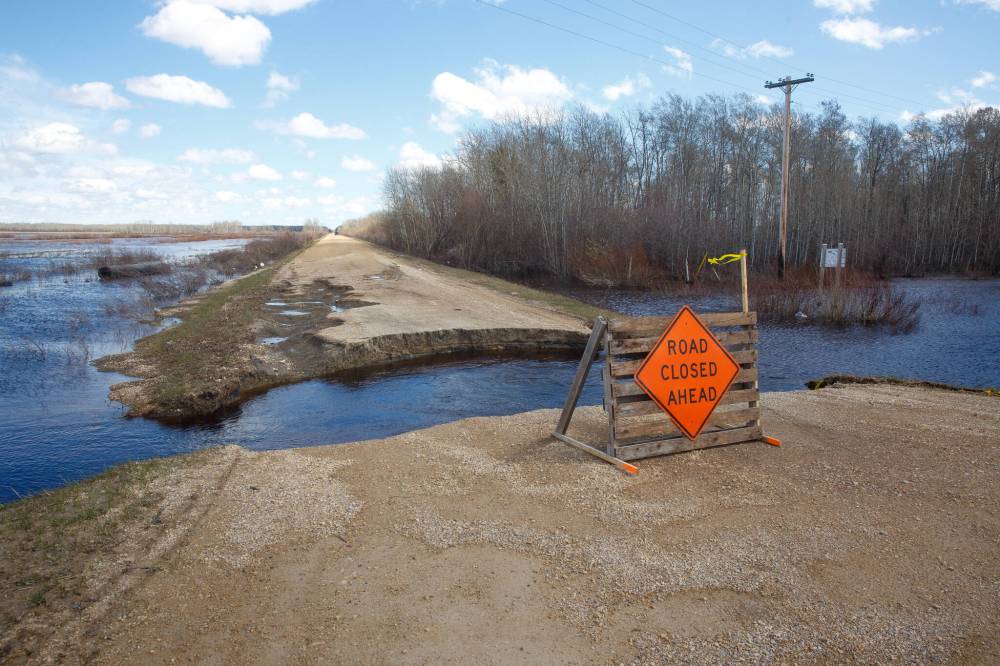First Nations seek enhanced protection from flooding
Advertisement
Read this article for free:
or
Already have an account? Log in here »
We need your support!
Local journalism needs your support!
As we navigate through unprecedented times, our journalists are working harder than ever to bring you the latest local updates to keep you safe and informed.
Now, more than ever, we need your support.
Starting at $15.99 plus taxes every four weeks you can access your Brandon Sun online and full access to all content as it appears on our website.
Subscribe Nowor call circulation directly at (204) 727-0527.
Your pledge helps to ensure we provide the news that matters most to your community!
To continue reading, please subscribe:
Add Brandon Sun access to your Free Press subscription for only an additional
$1 for the first 4 weeks*
*Your next subscription payment will increase by $1.00 and you will be charged $20.00 plus GST for four weeks. After four weeks, your payment will increase to $24.00 plus GST every four weeks.
Read unlimited articles for free today:
or
Already have an account? Log in here »
Hey there, time traveller!
This article was published 08/06/2022 (1241 days ago), so information in it may no longer be current.
The Assembly of Manitoba Chiefs is demanding government action to protect First Nations affected by extreme weather in the province.
Sixteen Manitoba First Nations have required flood assistance this spring, including Peguis, Roseau River, Sagkeeng, Pauingassi, Long Plain, Ebb and Flow, Pine Creek, Sapotaweyak Cree Nation, Sandy Bay, and Rolling River, according to Indigenous Services Canada.
“This year, First Nations citizens are evacuated at alarming rates due to above-average precipitation and severely cold temperatures,” said Assembly of Manitoba Chiefs acting Grand Chief Cornell McLean of Lake Manitoba First Nation.

“We continue to urge the government to engage with First Nations to protect our nations, lands and territories so that we are not existing in a perpetual state of crisis.”
This isn’t the first or last spring First Nations will be confronted by extreme weather, he said.
The greatest challenge of the ongoing flooding has been the displacement of First Nations members from their homes and communities. Many have been forced to relocate to Winnipeg or Brandon for an indeterminate amount of time until they can safely return home.
“Living in a big city, everything you do costs money. There’s only so much money that they have with the cost of food, the cost of gas, especially being encroached in a small room with multiple family members,” McLean said.
Some families return to their homes to find them laced with mould and uninhabitable.
As extreme weather intensifies, McLean said he believes climate change will have longlasting effects on First Nations.
Speaking from what he has seen in the Interlake region, McLean said when it comes to natural disasters, First Nations have faced flooding, tornadoes, ice storms, fires and other crises.
He said the province must provide flood mitigation and recovery infrastructure. This includes allowing First Nations to access funding offered to municipalities for road reconstruction, rehabilitation and preservation projects. This $15 million in funding from the province is dispersed across Manitoba’s 137 municipalities on a per-capita basis.
In a statement to the Sun, a provincial spokesperson said First Nations are under the purview of the federal government through Indigenous Services Canada, but it plans to work with federal and First Nation partners on the long-term infrastructure solutions in First Nations to better address potential flood events in the future.
Indigenous Services Canada previously invested $80 million to protect First Nations in Manitoba from flooding and recently renewed a one-year agreement with the Canadian Red Cross to support Manitoba First Nations in managing responses and evacuations to flooding.
Rolling River First Nation has experienced more serious flooding this spring than it has in recent years, said Chief Wilfred McKay.
“The water was higher. The river was pushing an inch within our bridges,” McKay said.
There are three bridges in the community used daily, which were all affected by rising waters in the area. School buses and water trucks were re-routed during the extreme weather as it was deemed unsafe to cross the bridges as the water crested.
Some basements also flooded.
Rolling River had declared a state of emergency, which is now over, but the community is worried about the viability of the three bridges now that the floodwaters have receded, he said. He wants the bridges, which are made of timber, to be upgraded to steel.
“We want our bridges brought up to a level where the water won’t hit the bridge and possibly wash it away,” McKay said, adding the roads near the bridges also need upgrades.
The most essential bridge to replace is the centre bridge, the oldest in the community, and the chief and council want to see the infrastructure upgrades take place over the summer. One of the girders on the structure has cracked in half and requires replacement, he said.
“That’s what we want as chief and council for Rolling River. We want steel bridges,” McKay said. “A wooden bridge’s lifespan is 50 years and ours are there.”
» ckemp@brandonsun.com
» Twitter: @The_ChelseaKemp
